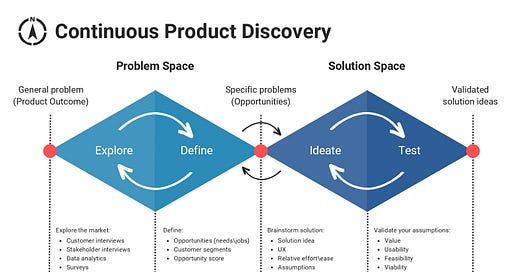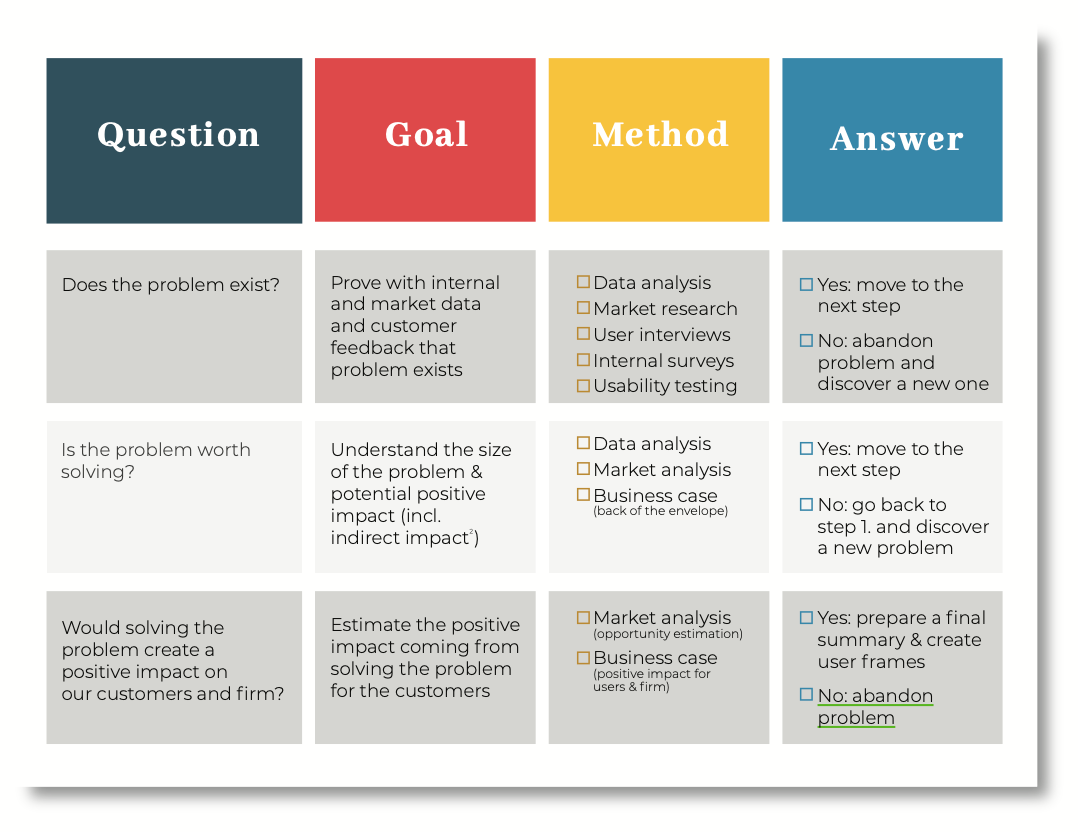Neglecting Product Discovery? You Should Read This
Product Management, UX, Startups, and more — freshly curated by Zeda.io
Hello, all you product-loving folks! 💜
Welcome to this week's edition of Product Café, your weekly cup of coffee for everything: product management, startups, AI, and more. ☕
It happens often that you come up with what you believe to be a groundbreaking idea. You're convinced it's going to be a hit. However, despite your enthusiasm, it barely makes a ripple in the market. Unfortunately, this is a common fate for many products launched without proper product discovery.
If you think product discovery is only crucial before a product's initial release, think again. Even established products can face setbacks with new features or product lines if they're developed without ongoing discovery efforts.
Steps in Product Discovery
Before getting into the steps, always remember that product discovery isn’t a one-and-done deal. It’s an ongoing cycle of research, ideation, evaluation, and refinement.
Always learn from your users, and use those insights to fuel your next innovation cycle. Let’s break down the essential steps to make sure you’re on top of your game:
Setting Clear Goals
What's Your Target? Begin with the end in mind. You might end up anywhere if you don’t know where you’re heading.
So, define what success looks like for each project or feature. Is it about boosting user engagement, reducing churn, or breaking into a new market? Let these goals guide your path and frame your discussions.
Understanding the Problem Space
What's bugging your users? That’s what you need to pinpoint. It's about getting to the heart of user frustrations and desires.
Conduct customer interviews (read between the lines) and surveys to gather direct feedback and analyze usage data to uncover less obvious issues.
Keep the following questions in mind while exploring the problem space 👇
Identifying Value Drivers
What Really Matters? Now that you know your destination, what are the main engines that will get you there? These are your value drivers. Think of them as your compass; they point you toward what creates real value for your customers and your business.
Exploring Solutions
Once you’ve identified a few critical value drivers, it’s time to get creative. What solutions can you devise that will deliver the expected results? Encourage yourself and your team to brainstorm and explore multiple options swiftly to find the best fit for your goals.
Zeroing in on Target Opportunities
Focus is key. Tackle one main opportunity at a time, breaking it down into manageable sub-opportunities. This approach helps avoid the pitfalls of cognitive biases by adopting a 'compare and contrast' mindset rather than a binary 'whether or not.' It’s about making strategic choices that align closely with your overall goals.
Lack of prioritization can lead to endless discussions and significant time waste. Every potential feature or project should be evaluated with these questions:
How does this contribute to our current goal?
How do we know this is the right thing to do?
How do we measure success?
How would we collect value?
Conducting Experiments
Small Tests, Big Learning: Before fully committing to one path, experiment on a small scale. Think of it as dipping your toes in the water before you dive in. This stage is all about learning what works and what doesn’t without overcommitting resources.
Delivering Solutions
Once you’ve identified a viable solution, focus on delivering it effectively to your audience. Start with a prototype or MVP (Minimum Viable Product) to gather customer feedback and learn what resonates.
Continuous Learning and Scaling
When your MVP shows promising results, it’s time to scale. But as you expand, keep refining. Ensure your product remains maintenance-friendly and relevant. It’s like baking a cake—start with a small test batch, and once you’ve nailed the recipe, you’re ready for the big bake-off.
Keeping a conversational, iterative, and user-focused approach to product discovery ensures that your products meet market needs and are continually adapted to exceed user expectations.
Who Owns Product Discovery?
Product discovery isn’t a solo sport; it’s a team effort that thrives on collaboration rather than silos and gatekeeping.
It’s a collaborative journey that involves product management, design, and engineering. This dynamic trio may go by different names across companies, but their core mission remains the same—learn together, build a shared understanding, and leverage insights to make customer-centric decisions.
If product discovery efforts are scattered across multiple roles without adequate coordination, the insights can become diluted, efforts can become costlier, and there's a higher risk of overwhelming your customers.
And there you have it! As we close this edition of our newsletter, remember that product discovery is much more than a phase—it's the backbone of successful product development. It's a journey that requires curiosity, collaboration, and a continuous commitment to understanding and solving the real problems your users face.
Keep challenging assumptions, keep asking the tough questions, and most importantly, keep listening—really listening—to what your users are telling you. Embrace the tools like Zeda.io and the techniques we've discussed, and use them to bring your team together around a shared vision and purpose.
Additional Resources:
https://www.linkedin.com/pulse/who-owns-product-discovery-jeff-gothelf/
That’s all, folks! Have something you want to share? Put them in the comments below, and we’ll get back to you soon.
See you again in the next edition! 🥂










